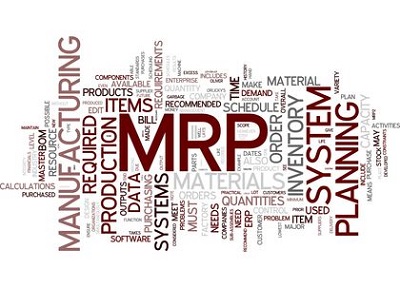The growing prevalence of MRP systems in the business arena has encouraged entrepreneur after entrepreneur to attempt the integration of an MRP system into their business process.
While the objective business benefits of the successful integration of an MRP system are very well known, we should also recognize that the implementation of such a system is indeed a meticulous and resource-intensive process that can indeed go wrong, with the implementation process ending up a failure and inadequate.
Understandably, some insight and active knowledge regarding the possibilities for implementation failure that could run their course can arm an entrepreneur looking to implement an MRP system with the proper safeguards.
Conversely, insight can shed renewed light on an already failed or sluggish MRP system and allow an entrepreneur to reorganize, regroup, and attempt to go through a successful implementation.

Potential Problems with MRP
PROBABLE REASONS FOR YOUR SYSTEM’S FAILURE
Listed below are some of the root causes as to why your MRP system is not providing you with valuable and considerable returns. Addressing these problems is the first step to solving the inefficiencies and getting your business back on track.
- Lacking proper inventory management: In manufacturing, close control of the inventory may be the most important factor in the attainment of profitability and efficiency. Closely watching over what you have, what you do not have, what you need, and recording it all down for later use should be done as needed to attain the benefits of an effective inventory control scheme. Special focus should also be given to the minimization of wastage and spending. While MRP systems are often touted as the solution to these very problems of wastage and spending, they have to be well designed for the job. Keeping the system updated regarding every change in the inventory will have a detrimental impact towards reducing your system’s efficiency.
- Inadequate quality control and supply chain management issues: The quality control scheme should be specifically designed and integrated into the business process from start to finish. If inadequate quality control stands as one of the reasons as to why your MRP implementation is failing, then there are serious issues and drawbacks to examine and patch up. Understandably, an MRP system is there to revitalize, boost, and grow a quality control scheme but basic rigidity must already exist for your MRP implementation to work at all.
The supply chain in modern times has become completely globalized; you can source what you need from anywhere in the world, breaking the chains of being forced to source locally. Despite the increases freedom in choice and presence of varieties however, the global supply chain comes with drawbacks including cost, price fluctuation, reliability issues, and problems with quality control. The consequence of a poorly managed supply chain influx is that your MRP system follows what it has been fed, not getting you anywhere closer to achieving seamless integration of data. Not being able to properly manage the influx results in a GIGO situation; garbage in garbage out.
- Lack of proper support and acceptance from management: MRP system implementation is not a ‘fire and forget’ endeavor for managers wishing to let their employees reap the benefits that a good MRP system can bring. A good MRP system can only exist if the business organization’s management is completely on board with the process. The implementation process itself is ideally intensive, involving sessions introducing the employees to the concept and training them to work with it. Half-hearted initiatives in this regard lack the vitally important clear sense of direction that employees need, especially the employees directly involved in the implementation of the MRP system.
- Process management: The MRP system is there to help you exert control over your business process but as with other factors mentioned above, it is not there to make gold out of dirt by automatically setting order to a highly disorganized process organization. It is absolutely essential for manufacturers to have total top to bottom control of their processes, with the MRP system existing the element to bind all the other factors together. The MRP system cannot stand alone in helping your organization achieve better process management. As a consequence of neglect of all the other ways a manufacturer can exert control of the process, ‘quick fixes’ are usually resorted to in order to duct tape a solution onto a developing situation.
Such practices commonly go on to cause costly problems, making investment into the right kind of MRP system absolutely critical. Only the right system can keep the processes well managed and very adaptable as well in order to help the organization meet new challenges and evolving environments.
CONCLUSION
The very philosophy of an MRP system is the convergence of all elements of the business process in a seamlessly linked together design. This calls for software and hardware looking towards the future.
Keeping an already implemented MRP system constantly updated is monumentally important. The days of relying on spreadsheets or quick software fixes are fading away into obscurity quite quickly.
Small manufacturers are also constantly proving the superiority of MRP/ERP systems as they continue to attain great successes. Consequently, even well established companies seek trusted IT partners in order to help them stay afloat and then thrive in today’s businesses world, keeping them up for the changes to come.
Thorough examination of your business process and all the variables involved, with the ERP system firmly in place along the lines listed above will get you started on identifying precisely the problems slogging you down.
You can also contact MRP system experts to provide a well detailed and helpful analysis of why your implementation is failing alongside a guided pathway to solutions.
Syncoria is a digital transformation firm based in Canada and is an official Odoo Ready partner.